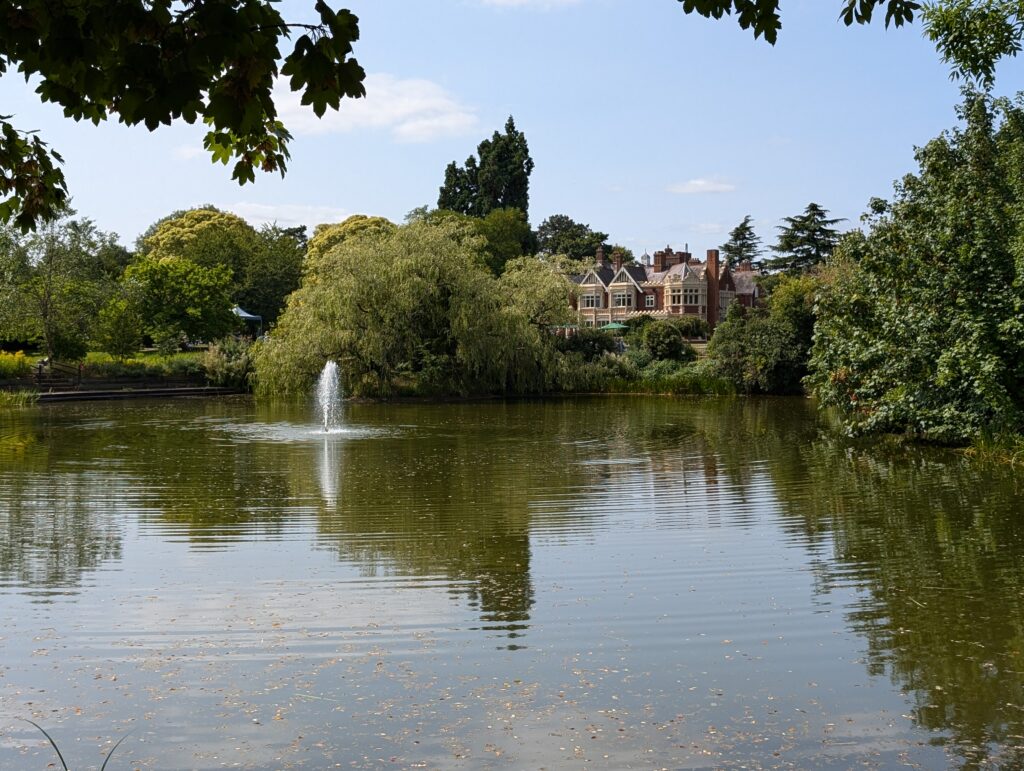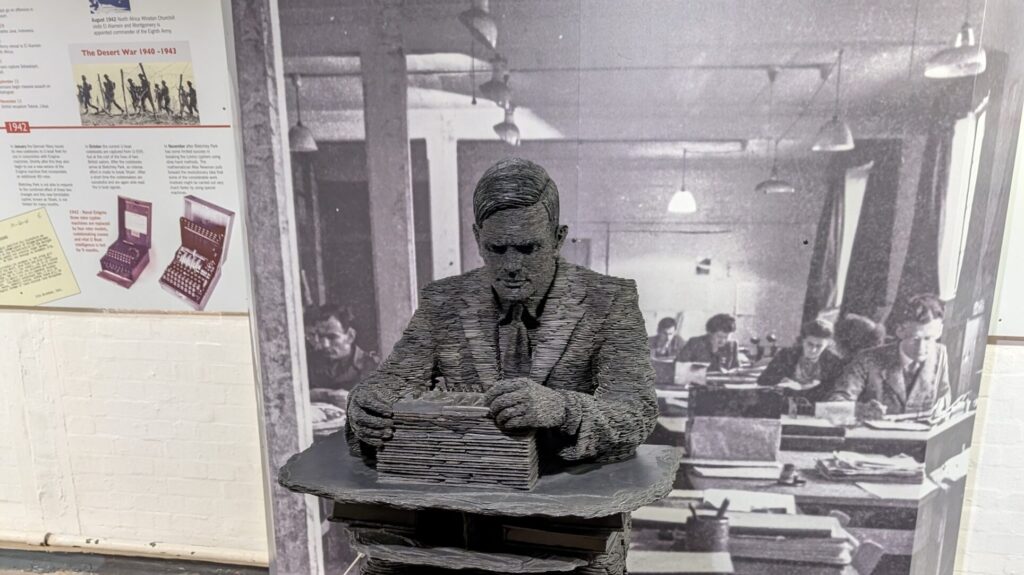Yesterday Mrs R and I visited Bletchley Park as part of our third wedding anniversary celebration. As a computer scientist, BP has been on my bucket list since forever. It's the cradle of many computing breakthroughs including cyber warfare, cryptography and crypt-analysis and the first generally programmable computer.
BP is a large stately home which was converted into a research campus by the British Ministry of Defence during the late 1930s. At its peak, the site hosted nearly 10,000 workers who all contributed to the analysis and decryption of secret messages being transmitted around within Hitler's army and between axis nations. The site features beautiful gardens and a large lake and staff were able to walk around the gardens and enjoy them in between shifts.

BP reminded me a lot of Hursley House where I worked for a few years during my time at IBM. Similarly, Hursley was bought by the Government and hosted the team who developed the spitfire in world war 2 before being sold off to IBM many years later. I used to enjoy going for a wander when I was ruminating on some problem I needed to solve and I can just as easily imagine Alan Turing and his colleagues wondering the grounds in BP when they had a particularly tough problem to solve.
The Wrens and the Bombes
The vast majority of staff at BP during this time were women from the Women's Royal Navy Service (WRNS, referred to "The Wrens"). There were a number of VIPs there, Turing being one of the better known figures but key amongst them were Gordon Welchman who was key in breaking the Enigma encryption and speeding up the automated cracking of keys. Another key figure, Tommy Flowers wasn't based at BP but worked with Turing to develop The Colossus, the very first programmable computer. Prior to this, all computation was done with purpose built machines which could only do the thing they had been designed for. The Bombes - mechanical code breaking machines that could try 40k combinations of enigma keys in 12 minutes - being an impressive example.

The Bombes were operated by the Womens' Royal Naval Service (WRNS or 'wrens' as they were known colloquially). In fact during the war, the staff on site were mostly women. It's somewhat ironic and sad that STEM fields are now so very male-dominated.
A Personal Connection
I found a personal connection to Bletchley when we saw an exhibit that showed how intelligence gathered from Hitler's Navy had fed to the British ship HMS Duke of York to help them to locate and sink the Scharnhorst, a German warship that was harrying a civilian convoy in arctic. My grandad was a sailor onboard the Duke of York and was interviewed about his experiences for the BBC (nb: they misspell Scharnhorst as Charnos in their coverage).

Staff were sworn to secrecy and were not allowed to talk about their work even amongst colleagues from other departments. I found it quite fascinating reading diary entries and personal accounts of how boring some of the day-to-day work at BP was. Many of the staff may not have realised just how important their contributions were until after the war. Some days as a software engineer I have days where I just get stuck thinking about a particular mathematical challenge. I can only imagine how annoying it must have been to spend days and days trying to break a code by hand or using primitive computing only. It must also be pretty surreal getting on a bus with colleagues every day and not being able to talk about what you'd been doing that day.
Turing Exhibit
There was a huge exhibit dedicated to Turing's contributions to BP and to computing in general including a copy of the letter signed by former Prime Minister Gordon Brown in 2009 apologising for the treatment of Turing. After World War 2, Turing was convicted of gross indecency for being in a sexual relationship with another man and as a result lost all of his academic credentials and funding. I suppose this was analogous to the modern concept of "being cancelled". Unable to continue his work, he was driven to suicide. His work truly laid the foundations for all of modern computing and Artificial Intelligence and we owe him a great debt of gratitude. As a gay man whose unfair treatment led to his death, I can't imagine he would look kindly on modern uses of AI for things like screening interviews and surveillance capitalism.

Conclusion
Overall, we had a really interesting day out at BP. It was really intriguing seeing the conditions that the codebreakers worked in and also nice to finally be able to talk to Mrs R about the Universal Turing Machine and how cryptography works. I'd strongly recommend that anyone with a vague interest in the history of information warfare or computing in general should pop along and visit.
Replies & Web Activities
If you would like to comment or reply then toot me or bluesky me about this url, or send me a webmention